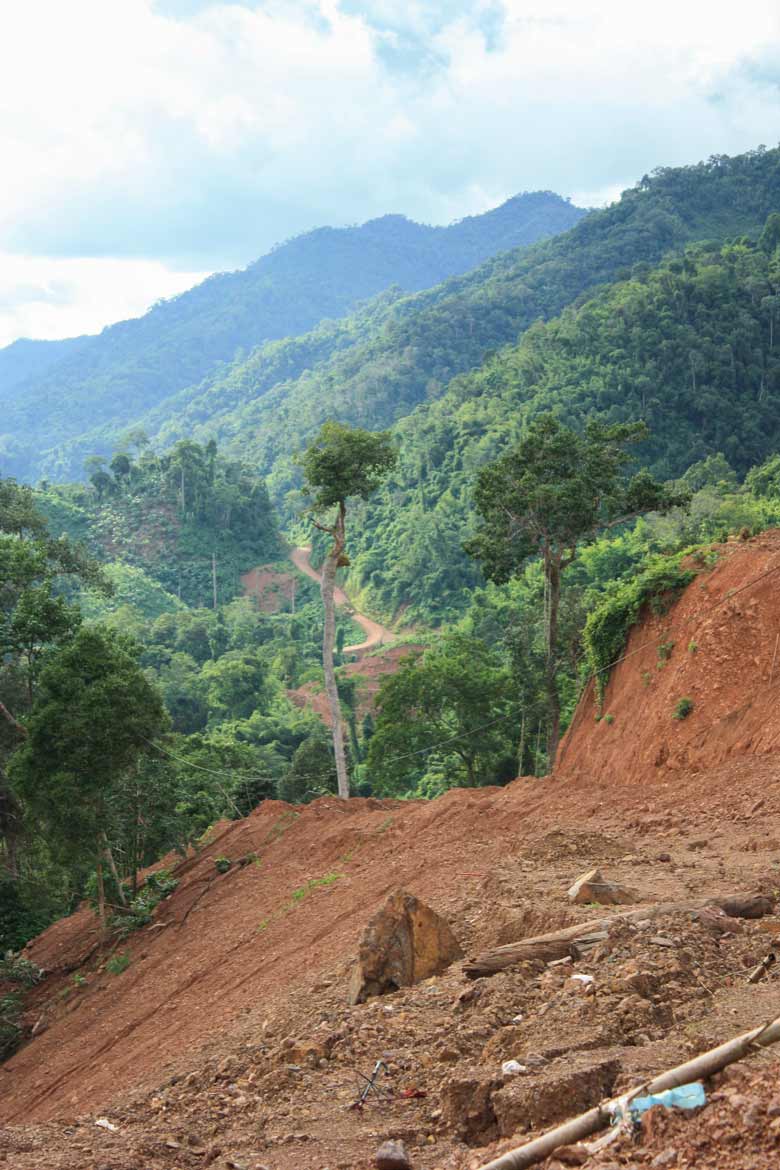Stanford researchers find world forest carbon stocks overestimated
Researchers with The Natural Capital Project show how fragmentation harms forests' ability to store carbon; more restoration is needed to reconnect forest patches.

Fragmented forests in Myanmar suffer reduced carbon storage capacity following deforestation for roads, timber or agriculture. (Image credit: Lisa Mandle)
Scientists have been significantly overestimating the amount of carbon stored in the world’s tropical forests, a new study reports.
World leaders and climate scientists use carbon storage estimates to devise carbon trading and mitigation agreements, such as those at the center of the recent 21st United Nations climate change talks in Paris. Deforestation is a huge source of excess carbon dioxide in the atmosphere, and leaders recognize forest conservation and restoration as a critical tool for reducing and mitigating climate change.
The new findings, published in Nature Communications, apply to forests where people have cleared trees – usually for roads, timber or agriculture. The more intensely humans use a forest, the more fragmented it becomes. This fragmentation creates more dry, exposed forest edges, which are less able to store carbon.
“This is the first predictive study of how exactly carbon storage changes with distance from forest edge,” said lead author Becky Chaplin-Kramer, a researcher at The Natural Capital Project based at the Stanford Woods Institute for the Environment. “Such predictions can be used to inform how to manage these systems, and refocus priorities toward maintaining larger patches of forest.”
Forest clearing accounts for an estimated 12 to 15 percent of global greenhouse gas emissions through the annual loss of nearly 77,000 square miles of forest (an area about the size of Nebraska), a third of which is in the tropics. These emissions are calculated through forest carbon inventories, which do not take into account the decrease in carbon stocks occurring in forests where they meet with converted land. If current carbon stock estimates for tropical forests are low, then mitigation plans designed to offset timber cutting will need to be adjusted to achieve climate stabilization goals.
“It turns out that when you account for lower carbon stored in the forest edges, the global total in tropical forests is about 10 percent lower than current estimates,” said co-author Paul West of the University of Minnesota’s Institute on the Environment. “Our results highlight the impact of breaking up large blocks of forests into smaller chunks. Targeting forest conservation and restoration efforts to fill in the gaps is a win-win for both the climate and natural habitat.”
The authors used insights gained from local studies, and coupled remotely sensed biomass data with land cover data, showing that edge effects vary considerably across forests. Wetter, tropical forests are more affected than drier counterparts. This research stems from an earlier collaboration that found a similar edge effect looking only at forests in Brazil. The authors then expanded their analysis to tropical forests throughout the world.
Co-authors include Richard Sharp and Lisa Mandle of The Natural Capital Project; Nick M. Haddad of North Carolina State University; Ivan Ramler of St. Lawrence University; James S. Gerber and Peder Engstrom of the University of Minnesota; Alessandro Baccini of Woods Hole Research Center; and Sarah Sim, Carina Mueller and Henry King of Unilever.
The Natural Capital Project is a collaboration between Stanford University, the University of Minnesota Institute on the Environment, The Nature Conservancy and the World Wildlife Fund, who are working to make it easier to account for the value of nature in making decisions.
